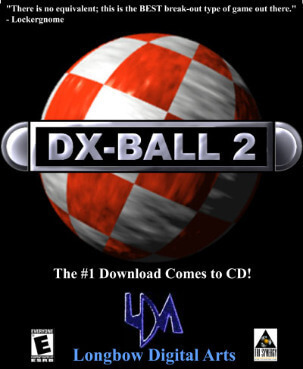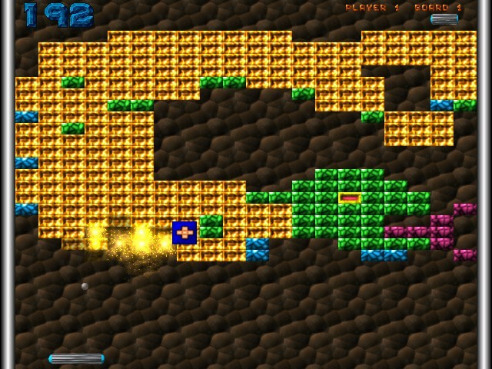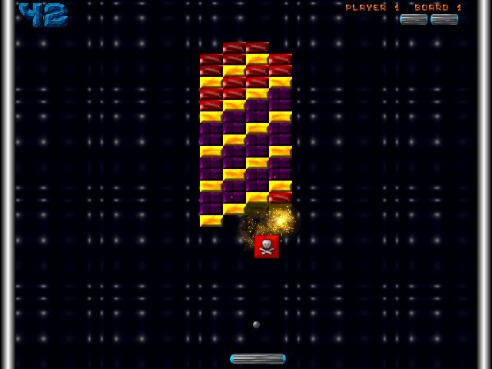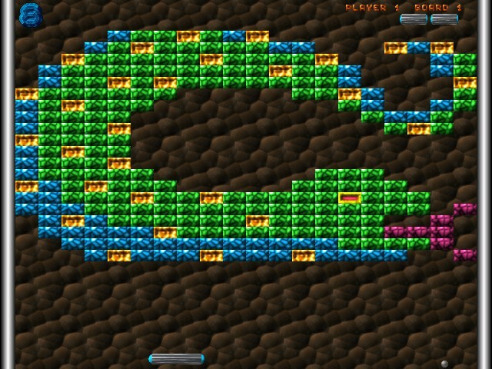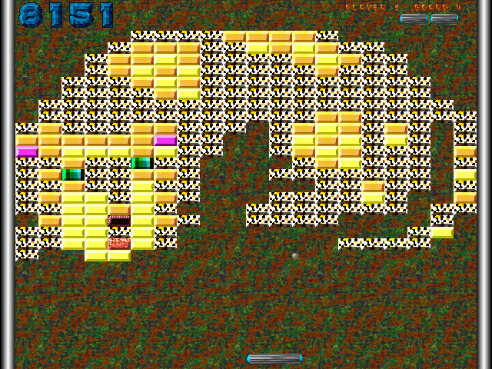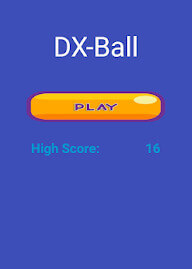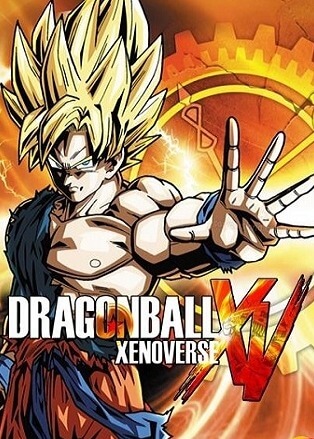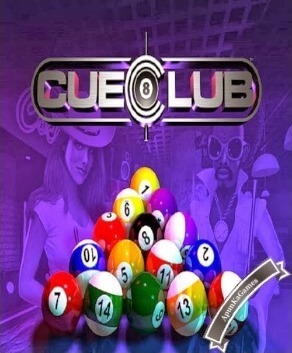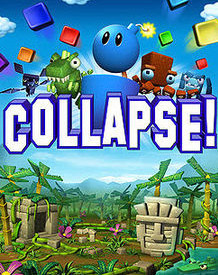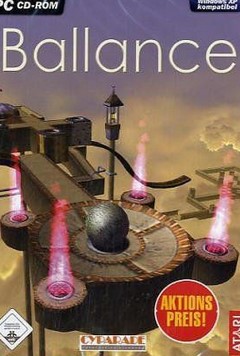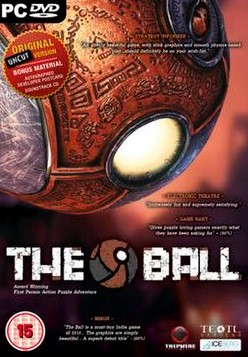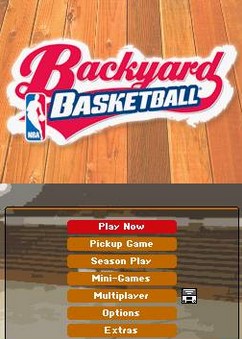DX-Ball 2 is a brick buster game for Microsoft Windows, developed by Longbow Games. As a follow up to DX-Ball by Michael P. Welch, the sequel is foremost remarked by the introduction of its 16-bit high-colour engine, presenting textured bricks and background graphics in vivid colours. The game also features two new Power-Ups, an easy to play "Kid-Mode", and a hotseat multiplayer mode, alongside an original soundtrack by SideWinder. DX-Ball 2 also introduces the feature of board-set selection, allowing the player to select between different sets of boards to play. The free demo thereby comes packed with a total of 24 boards divided into 6 board-sets of 4 boards search. Additional board packs can then be installed for more boards, whereas Board Pack 1 will expand the demo board-sets to 25 boards each, for a total of 150 boards. While a total of five board packs were released for the game, DX-Ball 2 was eventually succeeded by Rival Ball in 2001. A 20th Anniversary edition was announced on August 23rd, 2018 and was released on November 21st, 2018, which features a new high resolution boardset,new power ups,online leaderboard and boardset editor.
Gameplay
As a common Breakout-style game, the object is to clear the screen of all bricks, in order to advance to the next board. The player controls a paddle at the bottom of the screen by using the mouse, keeping one or more balls in play by bouncing them into a field of bricks to clear them. Some bricks will take multiple hits before they clear, while other bricks will appear to be unbreakable, invisible or combustible. As bricks are being cleared, random Power-Ups will occasionally released upon impact (see Power-Ups). The player may choose to catch these with the paddle, or avoid them, depending on the specific Power-Up and its effect. For instance, some Power-Ups may speed up game progress by enhancing the paddle with guns or splitting the ball into multiple balls, while other Power-Ups may increase the difficulty by speeding up the ball or shrinking the paddle. If the player misses the last or only ball in play, a paddle will be lost. The game will end once all spare paddles have been lost, or after the selected board-set has been completed.
Unlike other Breakout clones, the ball on DX-Ball 2 can travel freely at any angle and trajectory instead of being fixed at certain angles. The ball's trajectory will also differ depending on how the player controls it with the paddle. The speed of the ball gradually increases over time as the game continues, and will produce sparks and unique sound on the paddle when it has reached its maximum speed. Sharper angles can be achieved by bouncing the ball up with the paddle's edges while moving, which results in a much precision trajectory.
The difficulty level of the game can be switched between Normal and Kid-Mode. This is done by pressing F4 on the title screen, which allows the player to toggle between the two modes. Kid-Mode makes the game easier to play by excluding certain Power-Ups; reducing the ball speed (fixed in half of the highest speed); and letting the player start each board with extended paddle and a big ball. The excluded Power-Ups include Kill Paddle, Super Shrink and Shrink Ball. Hence the ball will always remain big, while the paddle may still be shrunk down by the regular Shrink Paddle power-up. Notably, Kid-Mode has its own high score table, which is separate from the high score table in Normal mode.
Rehab Mode is a more recent addition to the game, being introduced with version 1.3.2. While this feature is considered an advanced option, it is only accessible from the game's advanced configurations file. This file is located in DX-Ball 2's main directory as config.cfg, and can safely be opened and edited in Notepad or any text editor. When Rehab Mode is enabled, the player will have infinite playing chances, and also be able to change the speed of the ball by pressing the number keys on the keyboard, going from 1 (slowest) to 0 (the highest speed in Kid-Mode). Consequently, the Fast Ball, Slow Ball and Eight Ball Power-ups will not affect the ball speed in Rehab Mode. The player will not be able to submit a high score when Rehab Mode is enabled.
The hotseat multiplayer mode can be activated from the game's title screen by pressing F3, allowing up to four players. After selecting which board-set to play, Player 1 will occupy the game until a paddle has been lost or the board-set has been completed. Whichever comes first, Player 2 takes turn subsequently, and so on, until the cycle starts over. If one player loses all their paddles, the game is left to the remaining player(s). At the end of the game, only the player(s) who made it through the board-set will be allowed to submit their score on the High Score screen.
Categorised by colour, the game features twenty Power-Ups in groups of ten blue, five red, and five grey. Basically, the blue Power-Ups are considered good, while red increase the difficulty, and grey may vary depending on the situation.
Aside from the main objective to clear one's way through the selected board-set, the player is also rewarded points during gameplay, that may award a position on the leaderboard for the specific board-set. By default, 10 points are earned for each brick cleared. However, this number can increase from a variety of factors, including the ball speed, and the size of both the ball and the paddle. Ultimately, if the player is able to control a small ball in at the highest speed, with the smallest paddle size, each brick cleared will earn a total of 40 points. However, if the FireBall is obtained, each brick cleared will only earn 8 points, regardless of any other conditions. This is also true for explosive bricks in general, including adjacent pieces that are destroyed and for all bricks shot with Shooting Paddle. Multi-hit bricks will only earn 2 points per hit, before the final hit, with exception of invisible bricks, which only reward points as they are cleared. Points are also earned by collecting any of the available power-ups, which is worth 50 points each. The player is unable to save their high score if Rehab Mode is activated.
Reception
DX-Ball 2 was met with an overall positive reception from both editors and players. Games Domain reviewer Zack Schiel praised it for addictive gameplay, and noted it as the "best-looking Breakout game ever made". However, he also noted that the "overall graphics were not up to today's retail standards". Among other reviews, Shareware Viking gave the game "Warrior Status" with a score of 84/100, while ZDNet rated it 5/5 stars. Among consumer reviews, the game scored high at Epinions.com, with 4.5/5 stars out of twelve reviews, based on seven reviews of 5 stars and five reviews of 4 stars. Public favour was also remarked at Software Informer, where editor Daniel Ángel Romero gave it 3/5 stars, while the game maintains a user rating of almost 4.5/5 stars, based on 28 votes as of June 2012.
